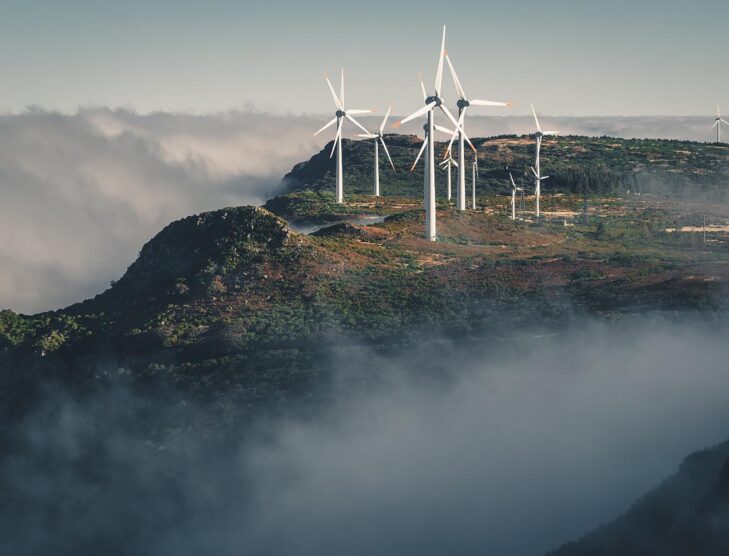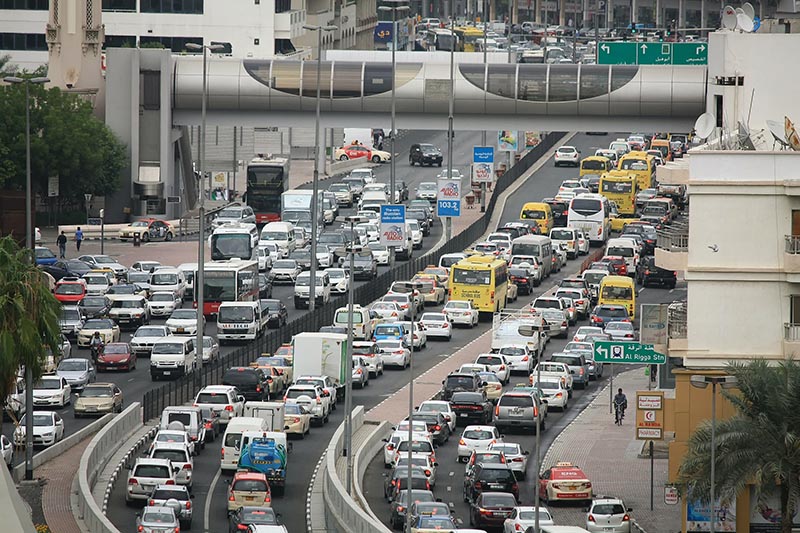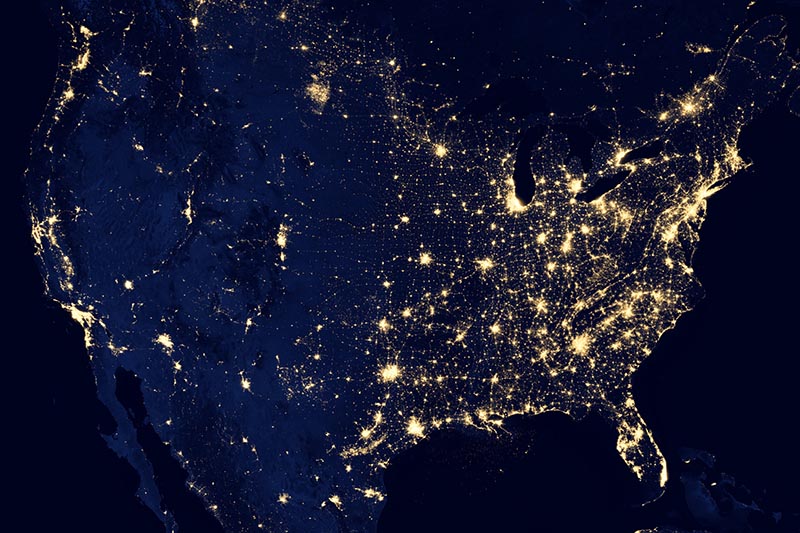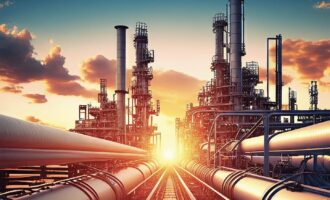
IRENA: The energy transition is “off track”
There is growing awareness of the severe consequences of climate change and the urgent need to take action to bring down our emissions. Weather events such as floods, droughts and fires are occurring with increasing frequency and intensity.
Progress has been made towards reducing global emissions and addressing environmental impacts. Nevertheless, the energy transition is off-track, says the International Renewable Energy Agency (IRENA), which is based in Abu Dhabi, United Arab Emirates. Current pledges and plans are insufficient to achieve the goal of the 2015 Paris Agreement to limit temperature increases to 1.5°C above pre-industrial levels.
IRENA is an intergovernmental organisation that supports countries in their passage to a sustainable energy future. The organisation published its World Energy Transitions Outlook 2023 in June. The outlook provides an overview of progress on the energy transition, offers a vision of the future energy landscape, and identifies priority areas and actions.
The gap between what has been achieved and what is required continues to grow, IRENA said. Commitments from member countries at the 27th United Nations Climate Change Conference (COP 27) in Egypt in November 2022 leave an emissions gap of about 16 gigatonnes (Gt) of carbon dioxide (CO2) in 2050. Most climate pledges are yet to be translated into detailed national strategies and plans, and deployment of energy transition technologies is far short of what is required.
IRENA’s analysis is based on two key scenarios, a Planned Energy Scenario (PES) based on government energy plans and other targets and policies, and a 1.5°C Scenario that is aligned with the 1.5°C climate goal. The report delivers a sobering message, demonstrating our collective ability to reduce greenhouse gas emissions to adhere to a 1.5°C (or even 2°C) temperature rise “hangs in the balance”. The current decade will ultimately determine our success in limiting global temperature increases. IRENA called for a significant acceleration across energy sectors and technologies. Failure to address the impending climate emergency will impact vulnerable populations the hardest, the agency said.
The outlook outlined a difficult 12 months since the 2022 World Energy Transitions Outlook was published. Enduring impacts of the Covid-19 pandemic, the Russia-Ukraine war and ongoing economic effects have contributed to the worst energy crisis we have experienced in decades.

Understandably, governments have taken actions to mitigate the impact of surging energy prices on both consumers and businesses. However, too many government actions are incompatible with the long-term transformation, IRENA said, with policies and investments “not moving in the right direction.” The highest level of fossil fuel subsidies ever were recorded in 2022, the agency said. The outlook urged policymakers to “strike the correct balance between reactive measures and proactive energy transition strategies.”
In an I-told-you-so type critique, the report also stated that the impacts of the energy crisis would have been less severe had investments in transition technologies in the power and heat sectors been made earlier.
Global investments in energy transition technologies reached USD1.3 trillion in 2022. To achieve a 1.5°C scenario, annual investments need to quadruple, IRENA said. The report estimates a cumulative USD150 trillion is required by 2050, USD47 trillion more than in the PES. USD1 trillion of annual investments in fossil fuel-based technologies need to be redirected to the energy transition under this scenario, the agency said.
IRENA also highlighted concerns around the geographical spread of energy transition technology deployments and investment, which are limited to a few countries and regions. 85% of global renewable energy investment benefitted less than half of the world’s population, the agency said.
The World Energy Transition Outlook’s 1.5°C pathway is evaluated using six performance indicators including the renewables used to generate electricity, and the direct use of renewables—counting the share of renewable energy in total final energy consumption and the quantity of modern bioenergy. Improvements in energy intensity, the electrification of end-use sectors, production and supply of clean hydrogen and derivative fuels, and the amount of CO2 captured are also key indicators.
More can be done to reduce emissions. It is not too late to change course, IRENA said. The 1.5°C scenario requires governments to proactively shape a renewables-based energy system. The outlook stressed the importance of embedding net zero commitments into legislation with appropriate resourcing and implementation plans. Otherwise, they remain purely aspirational, IRENA said.
A 1.5°C pathway requires the reduction of 37 gigatonnes (Gt) of CO2 from 2022 levels, with the share of renewable energy reaching 77% by 2050 (it was 16% in 2020). Changes in consumption patterns and improvements in efficiency will see global energy consumption fall by 6% in 2050.
Electrification and efficiency were identified as the key drivers of the energy transition, which will be enabled by renewable energy, clean hydrogen and sustainable biomass. To achieve the 1.5°C temperature goal, electrification needs to contribute more than 50% of total final energy consumption by 2050, with modern biomass and hydrogen meeting 16% and 14%, respectively.
Hydrogen is a clean and versatile energy carrier that will play a key role in the decarbonisation of end-uses and flexibility of the power system. However, traditional hydrogen production methods rely on fossil fuels and can result in significant greenhouse gas emissions. To achieve the 1.5°C goal, 94% of hydrogen needs to be renewables-based by 2050, IRENA said.

The outlook emphasised that the business case for renewables is strong. It is both technically feasible and economically viable to grow the volume and share of renewables. However, the analysis noted several “deeply entrenched barriers” to faster adoption exist, which are a hangover from a heavy fossil fuel-reliant system.
Most of the progress in the deployment of renewables to date has occurred in the power sector. In 2022, approximately 300 gigawatts (GW) of renewables were added globally, with renewables accounting for 83% of new capacity, compared to a combined 17% share for fossil fuel and nuclear technologies. Nonetheless, annual renewable power capacity additions need to reach an average of 1,066 GW per year to 2050 under the 1.5°C scenario, with global electricity demand set to triple from that of 2022.
84% of final consumption in the transportation sector will be satisfied by renewables by 2050. Electricity contributes 52% of demand, followed by hydrogen and its derivatives (23%) and biofuels (13%). IRENA noted the prominent role of direct electrification in road and rail transport, with ammonia and methanol playing a central role in shipping. Aviation will employ a combination of synthetic fuels and biofuels.
IRENA’s 1.5°C Scenario projects demand for clean hydrogen and its derivatives will reach 63 exajoules (EJ) by 2050. Biofuel’s share in primary energy supply needs to reach 22%, with IRENA emphasising the need for strong policy support—including blending quotas, mandates and subsidies.
While the journey towards a sustainable and low-carbon future seems daunting, a successful energy transition remains within our grasp. The outlook emphasised the importance of global collaboration on energy, calling for the approach to international cooperation to be “enhanced and redesigned.”







